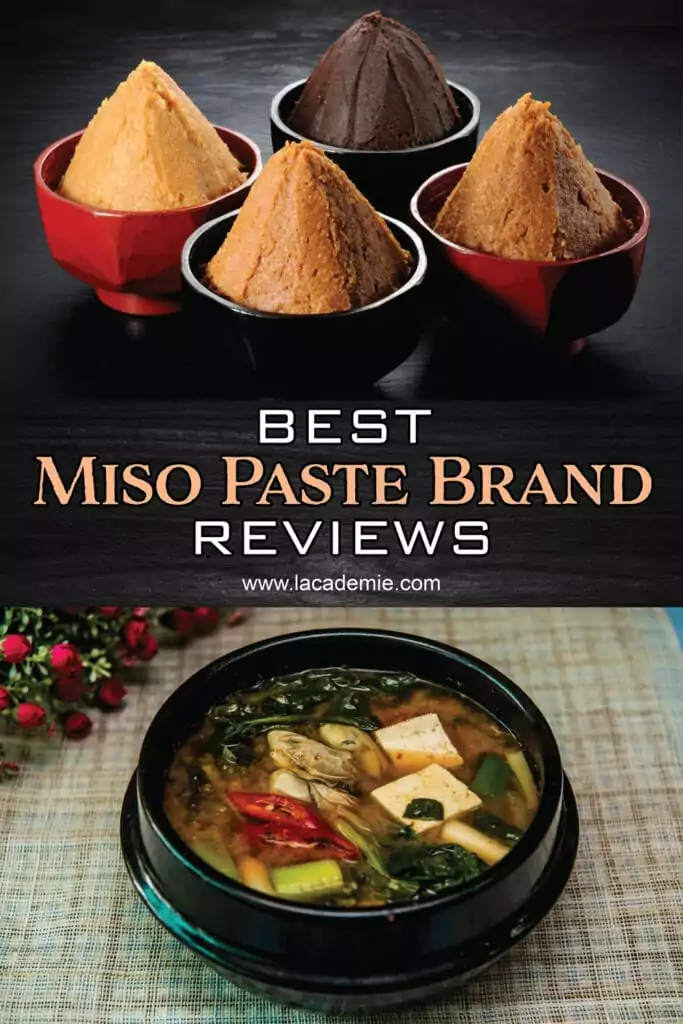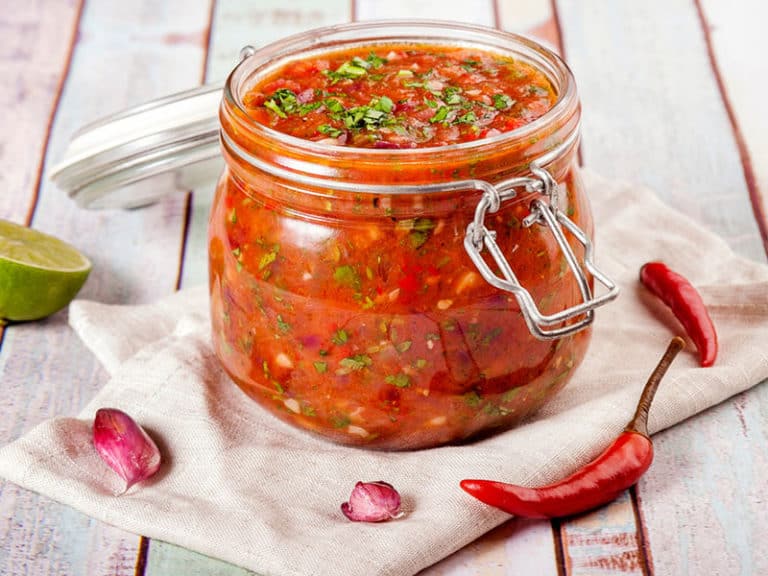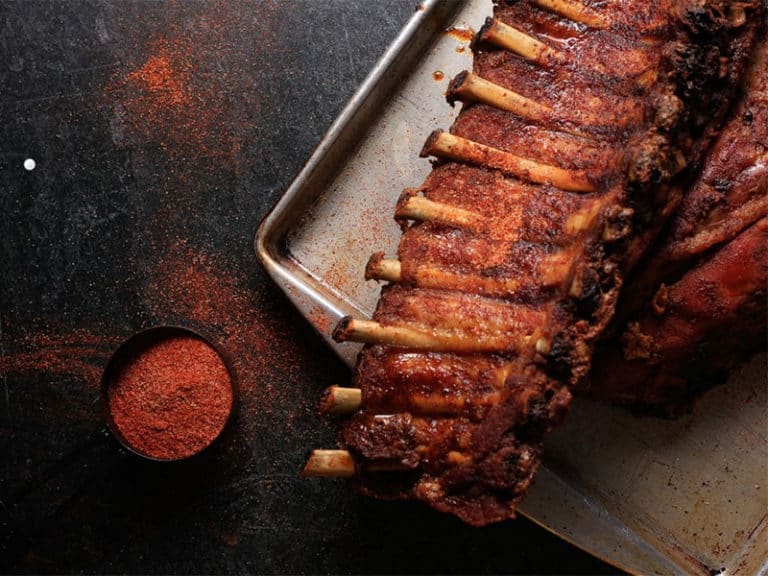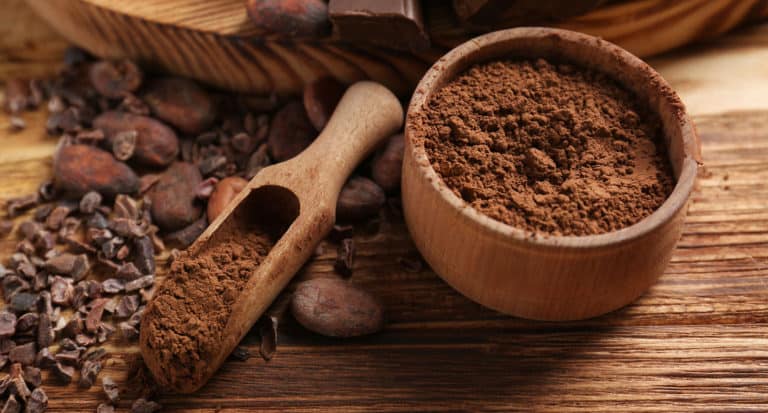The best miso paste will be a wonderful and easy-to-cook-with ingredient for numerous dishes. It is a must-have item in Japanese families and anyone who loves to cook Japanese meals.
However, there are more than 1300 kinds of miso on the market with hundreds of brands. Finding the best miso paste brand for your dish is easy and complex at the same time.
As an American husband in love with a Japanese wife and Japanese cuisine, I would like to share my experience and reviews about the best miso paste brands.
It will be a long, detailed review (as they say, you need time to find the best). However, I ensure that even if you don’t know what miso paste is, this article will open your mind, so stay tuned with me.
What Is Miso Paste?
Miso paste is a traditional ingredient in Japan. It is a paste made from fermented soybeans. It has a similar texture to peanut butter. It is typically a cultured mixture of soybeans, grains (for example, barley, rice, or rye), salt, and koji (a mold).
The mixture ferments for a couple of months or years to become miso paste. The longer it ages, the texture becomes darker and more complete in flavor. Overall, miso paste has a unique salty taste.
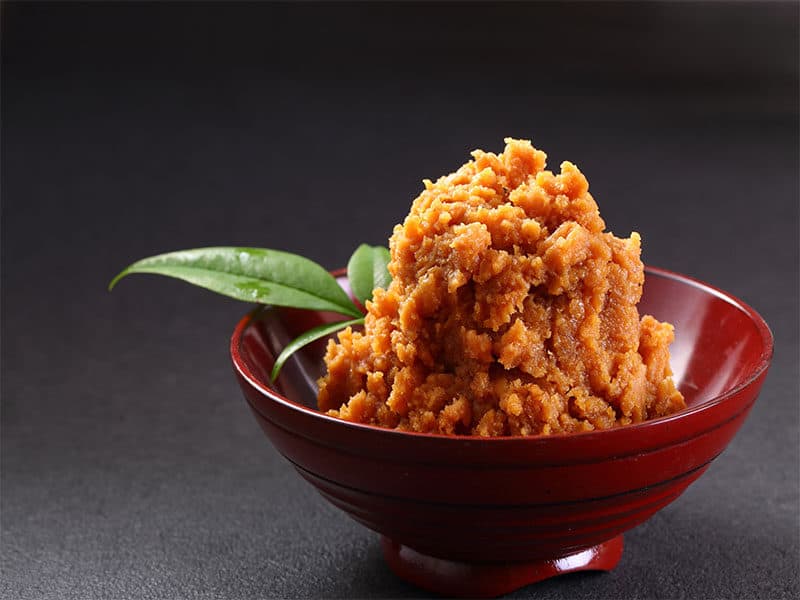
How To Cook With Miso Paste?
Miso paste is easy to cook with. It enables your normal meal to a whole new level.
Miso paste has a high umami factor, so you only need a little amount to create a savory, satisfying flavor to your dishes.
Its ability is wide, not only for Japanese food. You can use a couple of tablespoons of miso paste for the dressing of Asian slaw. In addition, use it in marinades for meat, together with rice wine vinegar, soy sauce, and sesame seed oil for perfect stews or BBQ.
In some cases, you can even use it as a solo flavoring as in miso-buttered succotash dish. Thanks to its soft and smooth texture, it can easily blend directly in your soups or marinade/ dressing for many dishes.
I want to recommend all of my friends, whether they are pro cooks or novices, to have one pack of miso paste at home since they can create many flavor combinations with its savory profile, from healthy dishes to desserts.
What Are The Benefits Of Miso Paste?
First of all, it is a unique dressing for your dish. Only a tablespoon of miso paste can make your eating tofu or ramen bowl turn into a different experience.
Secondly, consuming miso paste with an approximate amount is good for your health. This benefit is from its making process, fermented seasoning. The final miso paste contains probiotics, which are good for your digestion; other healthy bacteria can boost your immunity and promote a healthier gut.
Moreover, it can help alleviate some of the symptoms of depression and anxiety. Eating a good tasty dish can decrease depression, or stress, which I believe miso paste can do.
How Many Types Of Miso Paste?
The variety of miso paste is different from the ingredients and the portion of them; the length of fermentation and the condition where it is kept can create a new kind of miso paste.
Depending on its flavor, miso paste can be used for different purposes of cooking. In the USA, there are three common types of miso pastes, including: white miso, red miso, and awase miso.
White Miso (aka Shiro Miso)
White miso is the most common miso paste. It has a sweet and mild taste. The color of white miso can range from white to light beige.
To make white miso, you will need fewer soybeans and white rice koji. It takes from one to three months for fermentation.
White miso is usually used for light dressing, for example, salad dressing, soups, or in a marinade or glaze for fish and meat.
Red Miso (aka Aka Miso)
In contrast with white miso, red miso is made from a higher portion of soybeans to koji and fermented for a longer time. The color of red miso is from reddish-brown to nearly black, depending on its fermentation time and oxidation.
Red miso’s flavor is stronger than white miso, which is suitable for stews and braises.
Awase Miso
It’s not any specific miso. This word is a common term for a mix between two or more misos. Popularly, awase miso is a combination between white and red miso. Its color is also something between them.
This kind is suitable for those who like a stronger flavor than white miso but is not as salty as red miso. Awase miso is versatile for many dishes, from light dressing to marinade. It’s a good option for navice of Japanese cuisine cooking too.
It may be easy to mistake among these types when on the market. In particular, awase miso is usually defined as white miso due to its color, which is only a little bit darker than white, you can reference this video of how to distinguish each other.
Besides, there are some other types of miso that are less popular than white, red or awase miso, but you can also find them in the supermarket. If you are an advanced miso user or want to try something new with a unique taste, consider these:
- Hatcho miso: Hatcho miso is an upgraded version of red miso. It has a very dark brown color with a robust flavor, originally from Japan’s Aichi prefecture. To make hatcho miso, you need two or three years of fermentation.
- Brown rice miso (aka Genmai miso): Made from brown rice koji, this miso has an earthy flavor. Its finish is described as “burnished milk chocolate”. Brown rice miso is light enough for salad dressing. Some Japanese like to eat it with raw vegetables.
- Barley miso (aka Mugi miso): This type is made from barley koji. The flavor is the same as brown rice miso, but the color is slightly darker. You can use it to season soups or stir-fries.
- Country miso (Inaka miso): General miso in rural Japan. This miso is made with white rice or barley koji. The flavor can range from mild to medium-strong.
Which Are The Best Miso Paste Brands To Buy?
The best miso paste brands are HIKARI and MIKO. They have been famous for years for making various Japanese miso pastes, especially their white miso paste. Their products are made in Japan, which can ensure the taste of origin.
If you are looking for something stronger and richer in flavor, Maruman is for you. Their red miso paste is famous throughout the city. On the other hand, if you are allergic to soybean, try to consider Miso Master. They have many soy-free miso paste packages.
There are the top 14 miso paste brands that I find superior on the market. Those miso paste brands are all tasty and easy to buy.
- Best Overall: HIKARI Japan Organic 17.6 oz White Miso Paste
“Organic white miso, 17.6 oz, USDA certified organic ingredients, no MSG, gluten-free, no alcohol, zero cholesterol, product of Japan.” - Best Budget: ROLAND Gluten-free 35.3 oz White Miso Paste
“A twin pack of white miso paste (35.3 oz), sweet overtones with a mild saltiness, gluten-free, zero grams trans fat, product of Japan.” - Best Organic: YUHO 100% Organic Soybean 17.6 oz White Miso Paste
“100% organic white miso, made from organic soybeans and organic rice, non-GMO, no artificial additives, gluten-free, USDA organic and Ecocert certification.” - Best Awase Miso: MIKO Non-GMO Soyabean 17.6 oz Awase (Aka + Shiro) Miso Paste
“17.6 oz awase miso, combined from Aka and Shiro miso, made from soyabeans, packed in a box, GMO-free, unique flavor, work for soups, noodles, etc, product of Japan.” - Best White Miso: TastePadThai Non-GMO No MSG 35.2 oz White Miso Paste
“35.2 oz white miso, packaged in plastic bag, made from non-GMO soya beans, no MSG, mild taste, versatile, product of Japan, value package.” - Best Red Miso: MARUMAN Organic Japan 26.4 oz Red Miso Paste
“Red miso paste with strong flavor for aroma foods, net weight is 26.4 oz, made in Japan, 100% organic, rich nutrients, resealable package, long time usage.” - Best Barley Miso: EDEN FOODS Organic Soybean 12.1 oz Barley Miso Paste
“Organic barley miso, mugi flavor with dark color, non-GMO, wheat free, product of Japan, aged for 18 months, package of 12.1 oz with plastic bag.” - Best without Alcohol: TETSUJIN Organic & No Preservatives 35.2 oz White Miso Paste
“Organic & no preservatives white miso 35.2 oz, fermented for 3 months, sweet and mild profile, USDA & Kosher & ECO certified, no added MSG, no alcohol.” - Best for Broth: MARUKOME Organic For Broth 13.2 oz White Miso Paste
“Organic white miso paste for broth, 13.2 net weight, gluten-free, non-GMO, vegetarian, made in USA, packed with a well-sealed container, easy to use.” - Best without Soy: MISO MASTER Soy-free Organic Chickpea 16 oz White Miso Paste
“16 oz, premium soy-free chickpea miso paste, 100% organic ingredients, gluten-free, no preservatives, American-made with natural aging traditional Japanese process.” - Best for Miso Soup: MARUMAN Organic & Additive-free White Miso 26.4 oz Miso Paste
“ 26.4 oz Japan organic white miso, gluten-free, non-MSG, no preservatives, non-GMO soybeans, mild taste, packed in a plastic box with lid.” - Best with Low Sodium: HONZOKURI Alcohol-free & Low Salt 26.4 oz White Miso Paste
“White miso paste, finish in light brown color, low salt, contain 690mg of sodium per serving, no MSG, no added alcohol, resealable plastic package.” - Best for Salad Dressing: RED SHELL Japan Dressing Sauce 12 oz Miso Paste
“Japanese miso dressing sauce, creamy texture with light brown color, no MSG added, taste with tangy spices and delicate sweetness, packed in a glass bottle.” - Best with Probiotic: MISO BOOM Organic & Rich flavor 35.5 oz Red Miso Paste
“35.5 oz red miso paste, organic ingredients, no artificial preservatives, fermented wholefood, rich umami flavor, high nutritious, packed in a plastic bag.”
Miso Paste Comparison Table 2023
I categorize those 14 best miso paste brands on a comparison chart for your easier review here:
My Reviews For The Best Miso Paste Brands in 2023
When you don’t feel like setting for the best substitutes for miso paste, it’s time to opt for the best authentic miso paste out there. In this section, I will go into detail about each product, one by one. Hence, you can consider which one is the best for your dishes.
1. HIKARI Organic White Miso 17.6 Miso Paste Brand
(Best Overall)

Containing a high organic rice volume, the Hikari Organic white miso brings a balanced mild taste with a smooth texture, finished in a beautiful beige color. This is, in my opinion, the best miso paste.
All the ingredients are certified by the USDA to be organic. The product does not contain gluten or MSG. You can enjoy the miso soup without worrying about some toxic chemicals that may affect your health. Moreover, the portion of sodium-containing is low, so that it is suitable for those who follow a low-sodium diet.
This miso paste is pasteurized to ensure quality. However, this means it doesn’t have health advantages from active bacteria compared to unpasteurized miso paste.
Thanks for its creamy and slightly fishy flavor; its uses are versatile. You can use it to make marinades for fish or meat before baking or broiling. Another way is that you can mix it with dashi broth or its substitutes, add in some shrimps, chives, and seaweed to have a tasty soup.
This product comes in a neat plastic container with a lid. Hence, you can easily store the remaining in your fridge for a long time using. The package is about 17.6 oz, and you can use it to make about 30 bowls of miso soup.
Key Features:
- White miso
- 6 oz net weight
- Made from USDA certified organic rice & soybeans
- Sweet and tasty flavor
- Product of Japan
Pros
- Versatile for many dishes
- Organic ingredients, good for health
- Non-GMO, gluten-free
- Packed with box, convenient to store
Cons
- Don’t contain active bacteria
Product Specifications:
| Brand | MIKO |
| Type | White miso |
| Net Weight | 17.6 oz |
| Ingredients | Water, organic soya beans, organic rice, salt, yeast and koji culture |
| Sodium Intake | 540 mg (23%) |
| Used for | Miso soups/ Marinades/ Ramens |
Have a look at this taste testing video to see how they feel about the complex and unique flavor of this best miso paste.
2. ROLAND Gluten-free 35.3 oz White Miso Paste
(Best Budget)

Despite being budget-friendly, it still ensures your taste of real Japan paste miso.
Produced in Japan, the miso paste is made from water, soybeans, rice, salt, and alcohol, finishing in a brown color. It is gluten-free and contains zero grams of cholesterol or trans fat. Thus, you can use it without worrying it may harm your health.
The taste of it is sweeter rather than salty. You will see it have sweet overtones with a mild saltiness. I suggest this to anyone new to this Japanese ingredient.
Additionally, the miso paste comes in a sealed plastic bag, twin package per purchase. It is an ideal trade for someone who lives with family or uses a lot of miso paste every day. The quantity is larger than you can imagine for the price it costs.
Key Features:
- White miso brand
- Twin package, the total net weight is 35.2 oz
- Gluten-free
- Zero gram of trans fat, cholesterol
- Product of Japan
Pros
- Original taste
- Good for health
- Value package
- Versatile usage
Cons
- Only deliver in twin packs with the big amount
- Contain alcohol as a preservative
Product Specifications:
| Brand | ROLAND |
| Type | White miso |
| Net Weight | 35.3 oz |
| Ingredients | Water, soybeans, rice, salt and alcohol |
| Sodium Intake | 740 mg (31%) |
| Used for | Marinades/ Dressings/ Soup Stock/ Spreads |
3. YUHO 100% Organic Soybean 17.6 oz White Miso Paste
(Best Organic)

If you are concerned about the GMO ingredients in foods nowadays, try this Yuho organic miso paste.
Not many brands can claim its products as an organic product, especially Ecocert, since it needs to achieve many strict requirements from the ingredients, the manufacturing process, and the packaging.
This Yuho organic white miso can assure you about its origin since it has both Ecocert and USDA organic certifications.
Besides superb quality, which is good for your health, this white miso is made by an excellent production process, using Japanese microbial fermentation technology and constant temperature fermentation.
The process allows the paste to be created naturally, without adding chemical seasoning, while ensuring the unique flavor.
Key Features:
- Organic white miso
- Made from organic soybeans
- Non-GMO, gluten-free
- Ecocert, USDA organic certifications
Pros
- High quality organic product
- Versatile for many dishes
- No preservatives
- No chemical seasoning
Cons
- Don’t have a seal, so it’s hard to preserve the remaining amount
Product Specifications:
| Brand | YUHO |
| Type | White miso |
| Net Weight | 17.6 oz |
| Ingredients | Water, Organic Soybean, Organic Rice, Salt |
| Sodium Intake | 740 mg (31%) |
| Used for | Marinades/ Dressings/ Soup Stock/ Spreads |
4. MIKO Non-GMO Soyabean 17.6 oz Awase (Aka + Shiro) Miso Paste
(Best Awase Miso)

This is a combined type of miso, coming from a famous miso paste brand: Miko. This will be an ideal option for those people who don’t want to buy too many kinds of miso but still have the best ingredient in their house.
While red miso has a strong flavor and white miso is light and milder, awase miso is something in between, more balanced in flavor, and versatile to use. That’s also the reason why many Americans favor it.
When mixed with water in a 1:1 ratio, this miso paste can also create an alluring sauce that can be a great replacement for when you’re out of Worcestershire sauce. This option goes well with most meat, soup, stew, and stir-fry dishes. So keep this in mind for when the occasion arises.
This awase miso comes with brown color and quite smooth texture. It is non-GMO with no MSG, so it is good for your health.
You can use this Miko awase for your soups, noodles like ramen, or some stir-fried dishes as your choice.
Key Features:
- Awase miso (white + red miso)
- Made from soya beans
- No GMO, no MSG
- Brown color with a quiet, smooth texture
Pros
- Suitable for someone who is new to miso paste
- Flexible to use in many dishes, from light to heavy ones
- Original flavor
- Easy, convenient to store and preserve
Cons
- Contain bonito extract. Not suitable for vegans.
- Contain alcohol
Product Specifications:
| Brand | MIKO |
| Type | Awase miso |
| Net Weight | 17.6 oz |
| Ingredients | Soya beans, rice malt, salt, alcohol, and riboflavin |
| Sodium Intake | 860 mg (36%) |
| Used for | Miso soups/ Marinades/ Ramens/ Broth |
5. TastePadThai Non-GMO No MSG 35.2 oz White Miso Paste
(Best White Miso)

Not only me, but this best white miso is also reviewed and cheered by many consumers and famous Asian chefs. Unlike red miso with a strong umami aroma, this white miso is milder and more balanced in taste, making it versatile for many dishes.
TastePadThai white miro is made from non-GMO soya beans and salt. There isn’t MSG. Despite its name, this is Japan’s product, which surely brings the original taste of miso to you. Moreover, you will have pleasure when using this miso paste thanks to its smooth and creamy texture, together with a light brown color.
The miso paste also contains lots of good bacteria, which are good for your immunity and digestion. Vegetarians especially love to use it with their daily menu thanks to its benefits and unique taste.
The package is a good deal for your wallet. It is available in a package of 1, 2, or 3 bags, up to your needs. However, it doesn’t come with a box so if you want to use it for a long time, it’s best to store it in an airtight container at a cool temperature.
Key Features:
- White miso
- Made from non-GMO soya beans
- Have light brown color
- No MSG added
- Product of Japan
Pros
- Original taste
- Good for health (immunity and digestion)
- Versatile usage
- Value package
Cons
- Come with a plastic bag without a seal, hard to preserve
Product Specifications:
| Brand | TASTEPADTHAI |
| Type | White miso |
| Net Weight | 35.2 oz |
| Ingredients | Water, rice, soybean, salt, ethel alcohol (for preservation), riboflavin, seed malt from barley |
| Sodium Intake | 860 mg (36%) |
| Used for | Miso soups/ Noodles/ Marinades/Sauces |
6. MARUMAN Organic Japan 26.4 oz Red Miso Paste
(Best Red Miso)

In case you are looking for an umami bomb, try to consider using red miso, especially Maruman organic red miso paste.
Red miso has a longer fermentation time and more soybeans than white miso. Therefore, it comes with a strong flavor.
Maruman organic red miso paste is one of the top selections for Japanese food lovers currently. I’m sure that you can enjoy the original taste of Japan’s most famous savor when buying this paste. The miso paste is certified as organic in Japan.
This Maruman red miso has a strong flavor, ideally for strong aroma foods or marinades. However, it is flexible enough to be used for making soups or broth too.
In case you want to make soups or miso dips, only take a small amount of the paste, then you can increase the amount eventually. Do not season with a full spoon of red miso if you don’t have any experience.
Key Features:
- Red miso paste
- Net weight: 26.4 oz
- 100% organic certified in Japan
- Product of Japan
Pros
- Rich in flavor and nutrients
- Healthy ingredients
- Resealable package, convenient for storage
- Origin is Japan, the hometown of miso paste
Cons
- Only registered as organic in Japan, not in the US
- Japanese label
Product Specifications:
| Brand | MARUMAN |
| Type | Red miso |
| Net Weight | 26.4 oz |
| Ingredients | Water, soybeans ,and salt |
| Sodium Intake | Not specific |
| Used for | Strong aroma food |
7. EDEN FOODS Organic Soybean 12.1 oz Barley Miso Paste
(Best Barley Miso)

This miso paste is a perfect high note for your stir-fried vegetables or meat.
Eden organic barley miso paste is made with organic barley koji and organic whole soybeans and sea salt, koji, and water. Being aged for 18 months, the miso paste has a color of “burnished milk chocolate” or darker.
In parallel with the bold color, barley miso paste’s taste is earthy but still mellow enough for raw use.
It’s not easy to make barley miso with the right amount of earthy taste while ensuring a smooth blend with other delicate aromas. The taste is complexly created with a natural koji fermentation process and traditional techniques and craftsmanship.
This barley miso is cheered for stir-fried seasoning dishes, graves, vegetables, spreads, or even some kinds of noodles. If you plan to whip up some authentic Japanese recipe with healthy veggies, this paste will be the perfect choice as it blends exceptionally well with vegetables.
Key Features:
- Barley miso (Mugi miso)
- Earthy flavor with dark brown color
- Contain many nutrients (protein, iron, B2, probiotics, etc.)
- Contain good bacteria for digestion
- Wheat free
Pros
- Best for stir-fries
- High-quality ingredients
- Reliable origin
- Suitable for wheat allergies
- Have recipes in the back of the package
Cons
- Inconvenient package for storing
Product Specifications:
| Brand | EDEN FOODS |
| Type | Barley miso |
| Net Weight | 12.1 oz |
| Ingredients | Organic barley, organic whole soybeans, water, salt from sea, and koji (aspergullus oryzae) |
| Sodium Intake | 640 mg (27%) |
| Used for | Stir-fried dishes/ Graves/ Spreads/ Noodles/ Vegetables |
8. TETSUJIN Organic & No Preservatives 35.2 oz White Miso Paste
(Best without Alcohol)

The Tetsujin white miso has a light yellow color and a quite smooth texture, thanks to its three months of fermentation. Its profile is subtly sweet, adding a punch of umami. The flavor is perfect for dressing or direct use as a sauce.
Although it is a product of China, it ensures Japan’s flavor and quality. All ingredients are USDA organic, and Ecocert certified. Tetsujin white miso doesn’t contain any preservatives like alcohol. Non-GMO, PBA-free, Eco-certified, non-MSG, and no sweetener. Lastly, Kosher is certified by the OU. What can I expect more from food?
The package is BPA-free plastic. However, you will need to find an airtight container to keep it away from the antioxidant process. Keeping this in the fridge is the best solution for long time usage.
Key Features:
- Organic white miso (light yellow color)
- Net weight: 35.2 oz
- Certified by USDA organic and Ecocert
- Made from organic soybeans and organic rice
- Product of China
Pros
- Versatile to use
- No alcohol, MSG, sweetener
- Kosher certified by the OU
- Satisfaction guarantee (free refund or replacement if you are not happy with the purchase)
Cons
- Have to buy a large amount (1kg) at once.
- The plastic bag doesn’t have a seal
Product Specifications:
| Brand | TETSUJIN |
| Type | White miso |
| Net Weight | 35.2 oz |
| Ingredients | Water, organic soya beans, organic rice, salt |
| Sodium Intake | 930 mg (39%) |
| Used for | Fish/ Meat/ Broth/ Stir fry/ Miso Eggplant |
9. MARUKOME Organic For Broth 13.2 oz White Miso Paste
(Best for Broth)

If you are on a vegan diet but still want to try some miso soup, I recommend you to try this Marukome organic white miso paste.
The miso paste is made with organic ingredients and filtered water. It contains no gluten and is ideal for vegetarians. Plus, the fermentation process is made in the USA, so you can be assured about the paste’s quality.
Besides, this white miso paste has a light yellow color, the same as dried chicken broth. With its light wild taste, it is best for making broth, especially for those who need alternative options for beef broth, or miso soups. The umami-rich flavor is guaranteed to add depth to your dishes.
Moreover, the paste is pasteurized so that it doesn’t contain any good active bacteria, only vitamins, and minerals. However, pasteurization makes its lifetime last longer; just ensure that you store it in the fridge after opening.
Finally, Marukome also offers a reduced-sodium option for those who can’t consume too much sodium or don’t like too much salt in their foods.
This option has 25% sodium less than the original while keeping the taste the same. You can consider the reduced-sodium version here.
There is also a short video review about the reduced-sodium option; I just put it here for you in case you need it.
Key Features:
- Organic white miso for broth
- Made in the USA
- Gluten-free, non-GMO
- Suitable for vegetarian
Pros
- Organically made. Safe for health
- Well-sealed container, convenient to store
- Best taste for broth
- Best for someone who is on a vegan diet
Cons
- Contain alcohol
Product Specifications:
| Brand | MARUKOME |
| Type | White miso |
| Net Weight | 13.2 oz |
| Ingredients | Filtered water, organic soybeans, organic rice, sea salt, and organic alcohol for preservation |
| Sodium Intake | ~666 mg |
| Used for | Broth/Ramen soups |
10. MISO MASTER Soy-free Organic Chickpea 16 oz White Miso Paste
(Best without Soy)

Despite the fact that soybeans are well-known as a major ingredient in making the process of miso paste, many people are allergic to this kind of plant. This miso paste made from chickpeas is the solution for those people.
In particular, the paste is 100% made from organic ingredients, certified by USDA. Moreover, it is gluten-free and has no preservatives, so it is safe for your health. It is American-made, which will ensure the quality of the product.
Next, the taste is a combination of a mildly salty and lightly sweet taste, which is the result of having less salt and more rice koji in the fermentation process. It tastes lighter than the traditional miso paste.
Finally, Miso Master ferments this miso paste for about 30 to 60 days, allowing the lactobacillus bacteria in the mixture to continue their cycles while the product reaches buyers’ hands. These bacteria help to boost immunity.
Key Features:
- Organic chickpea miso paste
- American-made with soy-free
- 100% organic, non-GMO ingredients
- USDA organic certified, gluten-free
- The mild and sweet taste
Pros
- Organic miso paste with the natural aging making process
- Best for soy allergens
- Low sodium portion in comparison with soy miso paste
- Packed in a white box with a tight lid
- Balanced taste for versatile cooking purposes
Cons
- The taste is a bit different from the original soybean miso paste
Product Specifications:
| Brand | MISO MASTER |
| Type | White miso (with chickpea) |
| Net Weight | 16 oz |
| Ingredients | Organic Handmade Rice Koji, Organic Whole Chickpeas, Sun-Dried Sea Salt, Blue Ridge Mtn Well Water, And Koji Spores |
| Sodium Intake | 340 mg (14%) |
| Used for | Seasoning/ Broth/ Soups |
You may think Miso Master is a strange brand. However, it is the largest organic miso manufacturer in America. Here is an interview video about how its products are made, including the chickpea miso paste. Have a look, so you don’t miss out on a wonderful miso paste brand:
11. MARUMAN Organic & Additive-free White Miso 26.4 oz Miso Paste
(Best for Miso Soup)

Maruman is the first brand in Japan that has made additive-free miso since 1991. This organic white miso is one of its famous products.
This is a product of Japan, so you can be assured of its original flavor. It can fit with those who are now familiar with the flavor of miso. You can easily get used to its mild taste first. It is perfect to be used in salad dressing, marinades, and making soup (especially miso soup).
With Maruman white miso, you’ll find making authentic miso soup as accompaniments for sushi ridiculously easy. If anything, dare I say that everyone will soon be begging you to let them in on your secret to the perfect miso soup.
Fermented from non-GMO soybeans, no preservatives or MSG added, and gluten-free, this Maruman organic Shiro miso is good for your daily usage. Plus, miso paste contains a number of probiotics, so it can boost your immunity.
Unlike other miso paste brands, which pack their miso paste inside a plastic bag without a seal, this Maruman miso is thoughtfully designed with a plastic box covered by a lid. Hence, the miso paste can be stored neatly and safely inside the refrigerator, together with other foods.
Key Features:
- Organic white miso
- Organic certificated in Japan
- 4 oz per pack, packed in a plastic box with lid
- Japanese product
Pros
- Suitable for a novice who is new with miso
- Good for health (gluten-free, no MSG added, no preservatives, non-GMO soybeans)
- Easy to use with a mild taste
- User-friendly with a lid to cover the leftover
Cons
- Only for a soft and delicate flavor. You may need to add salt with a heavy meal like stews or braises.
- The label is in Japanese
Product Specifications:
| Brand | MARUMAN |
| Type | White miso |
| Net Weight | 26.4 oz |
| Ingredients | Soybean (non-GMO), rice, salt |
| Sodium Intake | Not specific |
| Used for | Miso soups/ Ramens/ Marinades |
12. HONZOKURI Alcohol-free & Low Salt 26.4 oz White Miso Paste
(Best with Low Sodium)

This product will be an ideal option for someone who likes miso paste but struggles at finding the right salty taste for him/ her.
As claimed on the label, this Honzokuri is a low salt white miso (aka miso genen), containing only 690mg of sodium per serving, lower as nearly half as other white miso in the same range.
Lower sodium means lower salty taste and more good for your heart. It is recommended for those who follow a low-sodium diet yet still want a bowl of miso soup someday.
Besides the low salt feature, this product has no gluten and no MSG, making it even better for your health.
The special thing is that the package contains cooking recipes for each season in the year. If you are a beginner in Japanese cuisine, this free stock can help you.
Key Features:
- White miso genen (low salt miso)
- Made in Japan
- Free from MSG and alcohol
- Packed in a plastic container with a lid
Pros
- Balanced flavor thanks to a reduced salt portion
- Convenient for multi-times usage
- Reliable origin
- Best for a person with a low-sodium diet
Cons
- Notice about shipping condition as it is claimed to be kept in the refrigerator
Product Specifications:
| Brand | HONZOKURI |
| Type | White miso genen (low salt miso) |
| Net Weight | 26.4 oz |
| Ingredients | Soybeans, rice, salt, water |
| Sodium Intake | 690 mg (28%) |
| Used for | Broth/ Soups/Dipping vegetables |
13. RED SHELL Japan Dressing Sauce 12 oz Miso Paste
(Best for Salad Dressing)

Creamy, tangy, and tasty are all I will describe this miso dressing. Its original is white miso paste too, but it is finished as a creamy sauce, specifically for salad dressing or making dips.
This product is perfect when you need to be quick and convenient in having some Japanese foods on your table. Since it is for dressing, the taste is balanced already. It is the perfect tangy and sour blend between soybean paste, rice vinegar, eggs, lemon juice, salt, and sugar.
You can use it directly for dipping sauce, dressing a salad, or making cocktail sauce for a mini sandwich. This miso dressing sauce is my trick to get my children to eat more vegetables. My two ways of usage are mixing raw vegetables with Red Shell miso dressing or making sauce for veggies dipping.
Finally, the package includes three bottles of Red Shell miso dressing. After opening the product, you should keep it in the refrigerator to maintain it fresh.
Key Features:
- White miso dressing
- Manufactured and distributed in the USA
- Has creamy texture in light brown color
- No MSG
- Packed in a glass bottle, 12 oz
Pros
- Able to use right after open
- Easy and convenient to store
- Best for salad dressings, cocktail sauces, and dipping sauces or sandwich condiment
- Reliable origin with high quality ingredients
Cons
- The product contains soybeans, eggs, and maybe wheat
- Always keep in the fridge
Product Specifications:
| Brand | RED SHELL |
| Type | White miso dressing |
| Net Weight | 12 oz |
| Ingredients | Soya bean Oil, Rice Vinegar, Soybean paste (contain soybean, water, rice, and salt), Vinegar, Water, Sugar, Corn Sweeteners, Eggs, Salt, Spices, Citric acid, Natural Flavors, Xanthan Gum, Propylene Glycol Alginate and Calcium Disodium EDTA added to protect flavor. |
| Sodium Intake | 180 mg (8%) |
| Used for | Dressing |
14. MISO BOOM Organic & Rich flavor 35.5 oz Red Miso Paste
(Best with Probiotic)

I want to introduce another outstanding organic red miso paste to you: Miso Boom soya beans miso paste.
The ingredients are organic soybeans, organic rice, water, and salt. Hence, it is safe for everyday consumption.
The paste is fermented in wholefood, so it supports healthy gut flora with beneficial bacteria (probiotics), then boosting your digestion ability.
Moreover, it also contains lots of essential minerals like vitamin B, E, K, folic acid, and protein. All are good for your health and your immunity.
Its ability is versatile, from making glazes, rubs, soups or broths, dressing salads or being in marinades, sauces, etc.
After a long time of fermentation, this red miso has a rich umami flavor. By using this paste, you can add a savory taste and strong aroma to your soups. Besides, you can use only a small amount of it for salad dressings or making cocktail sauces.
This product fits with your daily cooking for family-size.
Key Features:
- Red miso (Aka miso)
- Made from organic soya beans and organic rice
- Product of USA
- Non-GMO
- No MSG or artificial flavor
Pros
- Organic ingredients
- Strong umami flavor
- No preservative
- Can be applied to a wide range of dishes
Cons
- The package can’t be sealed
- Store in refrigerator
Product Specifications:
| Brand | MISO BOOM |
| Type | Red miso |
| Net Weight | 35.5 oz |
| Ingredients | Water, organic soya beans, organic rice, salt |
| Sodium Intake | 930 mg (39%) |
| Used for | Glazes/ Rubs/ Soups/ Marinades/ Sauces |
Buying Guide
As I said before, there are thousands of miso paste brands, Japanese and non-Japanese, on the market nowadays. Besides my top list of the best 14 miso paste brands, here are some factors that you need to consider when buying any miso paste.
Type
This is the first thing you need to decide when you want to have a box of miso paste at home.
White miso (aka Shiro miso); Red miso (aka Aka miso) and Awase miso are all the most popular thanks to their multifunctional usage and unique taste. They are widely distributed in many channels, hence, you can find them easily and conveniently.
In case you want to try freshly miso taste, try to consider hatcho miso, brown rice miso, country miso or barley miso.
Each type will have its significant taste and its best fit for some dish. The most common types widely distributed in America are white miso, red miso, and awase miso because of their versatility.
Taste
Food depends much on where they are made. Accordingly, miso paste made in Japan will have a different taste than Korea or America. Plus, the origin of the ingredients is a factor that contributes to the taste of miso paste.
There is a thing you need to note that consuming miso is the amount of sodium intake. Red miso has a higher sodium intake than white miso per serving. It is safe and good for your health to use an appropriate amount per day.
Meanwhile, some miso paste manufacturers offer low-sodium or reduced-sodium options for someone who is on a low-sodium diet. Some even have miso paste made from different plants more than soybean, which offers different nutrients. Remember to read the label before buying it.
Color Of Texture
Different types of miso will have different colors, from white to dark brown or even black.
In a type, the color may vary because it depends on the portion of the ingredients, between soybeans and grains (rice, barley,etc.); the fermentation time and process. Generally speaking, the longer miso paste is fermented, the darker color it has, and the darker a miso paste is, the saltier and more complex its flavor.
Some manufacturers use technology to affect the color of miso paste, also known as commercialized miso paste. They can make it dark without spending too much time on fermentation. Those products can even be darker than the traditional ones.
Portion
Generally, miso is considered a “preservative food” thanks to its salt content; some may store up to a year with good maintenance.
However, for those organic miso paste or without alcohol (considered as a preservative), you need to use it up quickly and store it in the fridge after opening. Some need to be kept at cool temperatures.
So, besides the taste, you will need to notice the portion too. Normally, miso paste is packed in 12.1 oz, 17.6 oz, 25.4 oz, or 35.2 oz portions. If you don’t use much miso paste in your daily cooking or live alone, only choose a small portion.
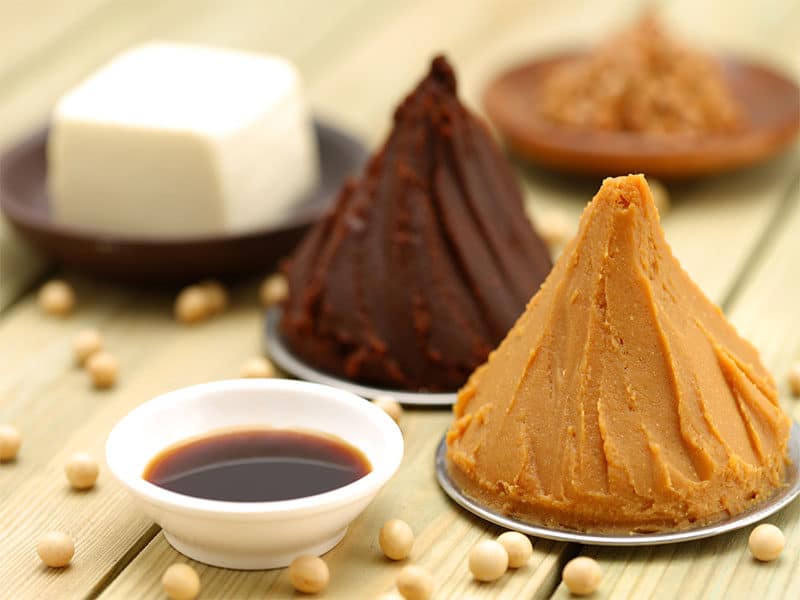
The Best Way To Store Miso Paste Brands
Miso paste is an oxidant food. Hence, you will see a common phenomenon when using this at home: the color of the texture will get darker eventually after you open the seal.
This is called the “maillard reaction“. Maillard Reaction describes when the amino acids from soybeans meet sugar, they make chemical reactions and turn brown. This response is even faster when in a warm environment.
So, here is the best way to store this wonderful ingredient:
Keep It In An Airtight Box
For some miso paste brands that don’t offer a box with a lid in the package, you should take out all of them, store in a separate box, or keep the whole package in a sealed container.
For those who come with a box, don’t be optimistic about the plastic boxes. Most of them are loose, so the air can get inside easily. Let use an extra plastic wrap onto the surface of the paste before putting the lid on. In this way, the paste can safely stay away from the air.
Store It In The Refrigerator
The cool temperature will maintain the quality of the miso paste. You can store it in a freezer too. The temperature to freeze it must be higher than 25F. At this temperature, for a few months, the miso paste will not freeze, and the aroma and flavor will not go away.
Only Open When You Use It. Close The Lid Immediately After Usage
The key thing is to keep the texture away from the air, which is the most reasonable in the darkening phenomenon.
FAQs
My Top Pick
From my experience, I highly recommend HIKARI Organic White Miso 17.6 Miso Paste Brand. It’s made in Japan so it has the original taste of Japan. Moreover, the product is certified as organic miso paste by USDA, does not contain MSG, gluten, and alcohol.
On the other hand, ROLAND Gluten-free Miso Paste is the best option for low-budget products. It also features the authentic Japanese miso taste packed with nutritions.
So tell me which miso paste above is your best taste? And do not hesitate to share your experience with it in the comment below. Don’t forget to share this article with your friends too. This delicious and healthy ingredient deserves to be shared widely.
